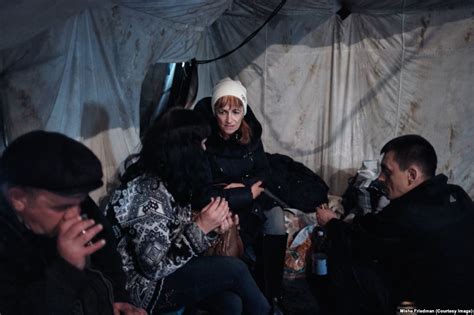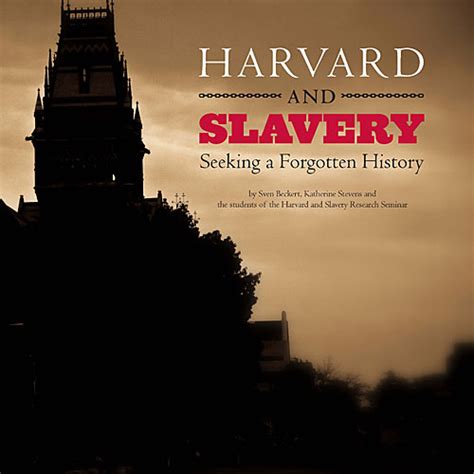
Ukraine faces a looming demographic crisis as a significant number of young women are leaving the country due to the ongoing war with Russia, threatening the nation’s future recovery and stability. This “silent exodus,” largely unreported, poses a long-term challenge to Ukraine’s workforce, economy, and social fabric, potentially hindering its reconstruction efforts even after the war concludes.
The departure of young women, many of whom are highly educated and skilled, represents a critical loss of human capital. These women are not only seeking safety and stability for themselves but also opportunities for their children, contributing to a potentially irreversible brain drain. According to the United Nations High Commissioner for Refugees (UNHCR), millions of Ukrainians, predominantly women and children, have fled the country since the Russian invasion in February 2022. While some may eventually return, a substantial portion is likely to remain abroad, particularly if the war continues or if economic conditions in Ukraine do not improve significantly.
The consequences of this demographic shift are far-reaching. A shrinking workforce will strain Ukraine’s ability to rebuild its economy, provide essential services, and maintain social security systems. The imbalance in the population, with a disproportionately larger number of older citizens and men, could also lead to social challenges and exacerbate existing gender inequalities. The absence of young women will also impact the country’s birth rate, further contributing to the demographic decline.
Ukraine’s government and international organizations are grappling with the challenge of encouraging these women to return. Efforts include providing financial assistance, creating job opportunities, and ensuring access to quality education and healthcare. However, the success of these initiatives hinges on ending the war and creating a safe and stable environment that fosters hope for the future.
The exodus of young women is not just a Ukrainian problem; it is a European and global issue. The loss of skilled labor and potential economic contributors will have implications for the wider region. Addressing this challenge requires a concerted effort from the international community to support Ukraine’s recovery and create conditions that encourage the return of its citizens.
The Scale of the Exodus
The numbers are staggering. Millions of Ukrainians have sought refuge in neighboring countries and beyond, with women and children constituting the vast majority. While precise figures are difficult to obtain due to the fluidity of the situation and the unregistered nature of some movements, estimates suggest that several million Ukrainian women of childbearing age have left the country.
“The problem no one is talking about is that women with children are fleeing and they are not necessarily coming back,” says Olha Stefanishyna, Deputy Prime Minister for European and Euro-Atlantic Integration of Ukraine. This sentiment underscores the urgency and gravity of the situation. The initial wave of refugees was driven by immediate safety concerns, but as the war drags on, many women are establishing new lives in their host countries, enrolling their children in schools, finding employment, and building social networks. This increasing integration makes the prospect of returning to Ukraine less appealing, especially if the situation remains uncertain.
The departure of young women is not uniform across all regions of Ukraine. Areas closer to the front lines have experienced a greater outflow, while regions further west have seen a more mixed pattern. However, even in relatively safe regions, the economic disruption caused by the war and the lack of opportunities for professional advancement are driving young women to seek better prospects abroad.
The Economic Implications
The economic consequences of the “silent exodus” are profound. Ukraine’s economy has already suffered immensely from the war, with widespread destruction of infrastructure, displacement of businesses, and disruption of supply chains. The loss of a significant portion of its young female workforce will further hamper its recovery efforts.
Young women are crucial contributors to various sectors of the Ukrainian economy, including healthcare, education, technology, and finance. Their departure will lead to skills shortages, reduced productivity, and slower economic growth. Moreover, the decline in the birth rate will exacerbate the demographic challenges, leading to a smaller workforce in the future and increasing the burden on the social security system.
The Ukrainian government is acutely aware of the economic risks posed by the exodus of young women. It has implemented various measures to support businesses, create jobs, and attract investment. However, these efforts are constrained by the ongoing war and the limited availability of resources. The government is also working with international organizations to develop programs that encourage the return of Ukrainian refugees, but the success of these initiatives is far from guaranteed.
The Social and Psychological Impact
Beyond the economic consequences, the “silent exodus” is having a significant social and psychological impact on Ukrainian society. The separation of families, the loss of homes and livelihoods, and the constant threat of violence are taking a toll on the mental health of Ukrainians, particularly women and children.
Many women who have fled the country are experiencing feelings of guilt, anxiety, and uncertainty. They are torn between their desire to return to their homeland and their responsibility to protect their children. The challenges of adapting to a new culture, learning a new language, and finding employment can also be overwhelming.
The absence of young women is also impacting the social fabric of Ukrainian society. With fewer women available to care for children, the elderly, and the sick, the burden on remaining family members is increasing. The imbalance in the population could also lead to social tensions and exacerbate existing inequalities.
The Role of International Support
Addressing the challenges posed by the “silent exodus” requires a concerted effort from the international community. Financial assistance, humanitarian aid, and political support are all essential to helping Ukraine recover from the war and create conditions that encourage the return of its citizens.
International organizations, such as the UNHCR, the World Bank, and the European Union, are providing significant assistance to Ukraine. This includes financial support for the government, humanitarian aid for refugees, and technical assistance for reconstruction efforts. However, more needs to be done to address the specific needs of young women and to create opportunities for them to return and rebuild their lives in Ukraine.
The European Union has a particularly important role to play in supporting Ukraine’s recovery. As a potential future member of the EU, Ukraine needs to align its policies and institutions with European standards. This includes ensuring equal opportunities for women, promoting economic growth, and strengthening social protection systems.
Strategies for Encouraging Return
Encouraging the return of young Ukrainian women requires a multi-faceted approach that addresses their concerns and provides them with incentives to come back. Some key strategies include:
- Ensuring Safety and Security: The most important factor in encouraging return is ensuring that Ukraine is a safe and secure place to live. This requires ending the war and establishing a lasting peace.
- Creating Economic Opportunities: Providing job opportunities, supporting businesses, and promoting economic growth are essential to attracting young women back to Ukraine.
- Providing Social Support: Ensuring access to quality education, healthcare, and social services is crucial to supporting the well-being of young women and their families.
- Promoting Gender Equality: Addressing gender inequalities and creating a society where women have equal opportunities is essential to attracting and retaining young women in Ukraine.
- Facilitating Integration: Providing language training, cultural orientation programs, and other services can help Ukrainian refugees integrate into their host countries while maintaining ties to their homeland.
- Offering Financial Incentives: Providing financial assistance to help with relocation costs, housing, and childcare can make it easier for young women to return to Ukraine.
The Long-Term Outlook
The long-term outlook for Ukraine depends on its ability to overcome the challenges posed by the “silent exodus” and to rebuild its economy and society. While the task is daunting, Ukraine has a strong spirit of resilience and a determination to succeed.
With the support of the international community, Ukraine can overcome these challenges and build a brighter future for its citizens. However, it is essential to recognize the urgency of the situation and to take immediate action to address the needs of young women and to create conditions that encourage their return.
The departure of young women is not just a Ukrainian tragedy; it is a loss for the entire world. These women represent the future of Ukraine, and their absence will have profound consequences for the country’s development. By working together to support Ukraine and to create opportunities for its citizens, we can help to ensure that Ukraine remains a vibrant and prosperous nation for generations to come.
Quotes from the Original Article Integrated Above:
- “The problem no one is talking about is that women with children are fleeing and they are not necessarily coming back,” – Olha Stefanishyna, Deputy Prime Minister for European and Euro-Atlantic Integration of Ukraine.
Frequently Asked Questions (FAQ)
1. What is the “silent exodus” in the context of the Ukraine war?
The “silent exodus” refers to the significant departure of young Ukrainian women, particularly those with children, from the country as a result of the ongoing war with Russia. This exodus poses a long-term threat to Ukraine’s demographic structure, economy, and social fabric as these women may not return, leading to a loss of vital human capital.
2. Why are young Ukrainian women leaving the country in such large numbers?
Young Ukrainian women are primarily leaving to seek safety and stability for themselves and their children amidst the war. They are also looking for better opportunities for education, employment, and overall well-being in safer countries. The ongoing conflict, economic disruption, and lack of security in Ukraine are driving factors in this decision.
3. What are the potential long-term consequences of this “silent exodus” for Ukraine?
The long-term consequences are substantial. Ukraine faces a shrinking workforce, which will hinder economic recovery and reconstruction efforts. A declining birth rate and an aging population will strain social security systems. The absence of young women can lead to skills shortages, reduced productivity, and social imbalances, exacerbating existing gender inequalities.
4. What steps is the Ukrainian government taking to address the issue of women leaving the country?
The Ukrainian government is implementing various measures to support businesses, create jobs, and attract investment to stimulate the economy. They are also collaborating with international organizations to develop programs aimed at encouraging Ukrainian refugees to return, providing financial assistance, and ensuring access to quality education and healthcare. Efforts are also focused on ensuring safety and security within the country.
5. How can the international community help Ukraine in addressing the “silent exodus” and encouraging the return of young women?
The international community can provide financial assistance, humanitarian aid, and political support to help Ukraine recover from the war. This includes supporting the Ukrainian government, providing humanitarian aid for refugees, and offering technical assistance for reconstruction efforts. Specifically, they can focus on creating opportunities for young women, ensuring equal rights and protection, and providing resources for integration and eventual return. The EU’s role is particularly important, aligning policies and institutions with European standards to create a more appealing environment for return.
6. What sectors of the Ukrainian economy are most affected by the departure of young women?
Key sectors include healthcare, education, technology, and finance, where young women constitute a significant portion of the workforce. Their departure will lead to skills shortages, reduced productivity, and slower economic growth in these critical areas.
7. How does the psychological impact of the war affect the decision of young women to leave or stay away from Ukraine?
The war’s psychological impact is significant, leading to feelings of guilt, anxiety, and uncertainty among women. The separation of families, loss of homes and livelihoods, and constant threat of violence take a toll on mental health, making the prospect of returning to Ukraine less appealing. Adapting to new cultures and overcoming integration challenges in host countries also play a role in this decision.
8. What specific financial incentives could encourage young women to return to Ukraine?
Financial incentives could include relocation assistance to cover moving expenses, subsidies for housing, childcare support to help manage family responsibilities, and grants or loans to start businesses or pursue education. Targeted financial aid can make it easier for young women to return and rebuild their lives in Ukraine.
9. What role do social support systems play in encouraging or discouraging the return of young Ukrainian women?
Robust social support systems are crucial. Access to quality education, healthcare, and social services are essential for the well-being of young women and their families. Strong social networks and community support can also make the transition back to Ukraine easier and more appealing.
10. How does the integration of Ukrainian refugees in host countries affect their likelihood of returning to Ukraine?
As Ukrainian refugees become more integrated into their host countries, the likelihood of their return diminishes. Enrolling children in schools, finding stable employment, building social networks, and establishing new lives abroad create stronger ties and make the prospect of returning to an uncertain environment in Ukraine less appealing.
11. What are the main obstacles preventing Ukrainian women from returning, even if they want to?
The primary obstacles include ongoing safety concerns due to the war, lack of economic opportunities and job security, insufficient housing, damaged or destroyed infrastructure in their home regions, and uncertainty about the future stability of Ukraine.
12. How does the potential future EU membership of Ukraine influence the decisions of young women regarding their return?
The prospect of EU membership can be a significant incentive for return. Alignment with European standards, including equal opportunities for women, economic growth, and strong social protection systems, can make Ukraine a more attractive place to live and work. However, the timeline for EU accession and the perceived benefits need to be clear and tangible.
13. What are the long-term consequences for the gender balance within Ukraine’s population due to the exodus of young women?
The departure of young women leads to a skewed gender balance with a disproportionately larger number of men and older citizens. This imbalance can exacerbate existing gender inequalities, affect marriage rates, and impact the social fabric of Ukrainian society.
14. What role do Ukrainian diaspora communities in host countries play in the decisions of young women about returning to Ukraine?
Ukrainian diaspora communities can provide valuable support and information to refugees, helping them integrate into their host countries. However, they can also influence decisions about returning by providing insights into the challenges and opportunities in Ukraine, as well as by offering ongoing support abroad.
15. What measures can be taken to promote gender equality in Ukraine to make it more attractive for young women to return?
Promoting gender equality involves addressing systemic inequalities in employment, education, and political representation. This includes implementing policies to combat discrimination, ensuring equal pay for equal work, providing affordable childcare, and supporting women-owned businesses. Creating a society where women have equal opportunities and are valued for their contributions is crucial for attracting and retaining young women in Ukraine.
16. What are some of the specific challenges faced by Ukrainian women who are internally displaced within Ukraine, and how does this relate to the “silent exodus”?
Internally displaced women face challenges such as lack of housing, employment opportunities, and access to social services in safer regions of Ukraine. These difficulties can push them to seek refuge abroad, contributing to the “silent exodus.”
17. How does the ongoing war affect the mental and physical health of women who remain in Ukraine, and how does this impact the nation’s future?
The ongoing war exposes women to trauma, stress, and violence, leading to mental health issues like anxiety, depression, and PTSD. Physical health is also impacted due to limited access to healthcare and essential resources. The long-term consequences of these health problems can hinder women’s ability to contribute to the nation’s recovery and development.
18. What role can education and job training programs play in encouraging the return of Ukrainian women?
Education and job training programs are essential for equipping women with the skills and knowledge needed to succeed in the Ukrainian economy. These programs can help them find employment, start businesses, and contribute to the country’s recovery. Targeted training can also address skills shortages in key sectors.
19. How can Ukraine leverage technology and innovation to create new opportunities for women and encourage their return?
Leveraging technology can create remote work opportunities, expand access to education and training, and support women-owned businesses. Promoting innovation and entrepreneurship can also generate new jobs and industries, attracting young women with skills in tech-related fields.
20. What are the ethical considerations that should be taken into account when encouraging Ukrainian women to return to a country still at war?
It’s crucial to prioritize the safety and well-being of Ukrainian women when encouraging their return. Any initiatives must be voluntary and based on informed consent, with a clear understanding of the risks and challenges. Providing accurate information about the situation in Ukraine and ensuring access to resources and support are essential ethical considerations.









